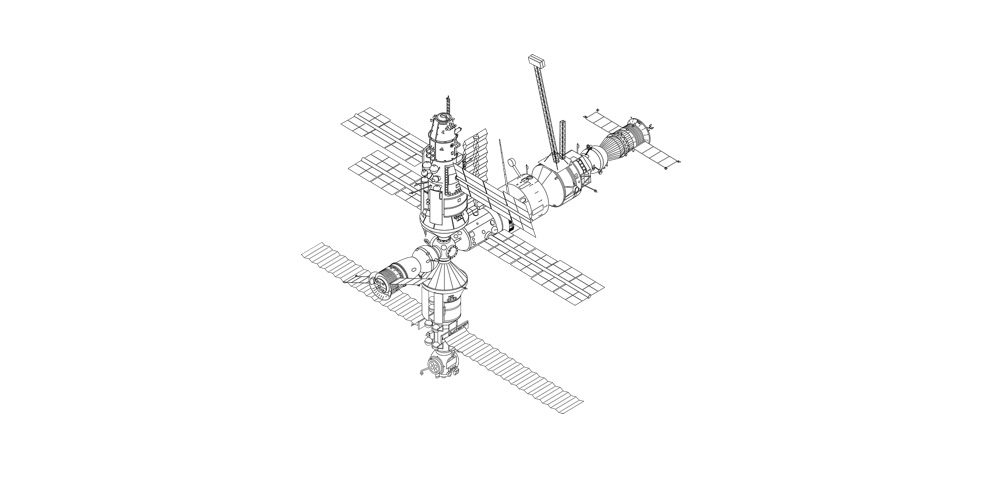The race to the stars

How Competition Started it All
The competition began on August 2nd, 19551.
The Soviet Union shocked the world by declaring their intentions to launch a satellite, following a similar announcement made by the United States four days earlier. This moment marked the beginning of the Space Race, a period of technological rivalry between America and the USSR. It was a way to fight for political dominance and to guarantee national security. It fueled America’s fears of Russian aggression, but also made people believe their country could accomplish the impossible.
The first few years of the competition were dominated by the numerous triumphs of the USSR. When they were first to launch an artificial satellite Sputnik 1 into space, America’s counter-efforts came under fire. Literally and figuratively. In December of 1957, America’s first attempt at a satellite launch (later given the nickname of “Oopsnik” and “Stayputnik” by international press) burst into flames after reaching a woeful altitude of 4 feet2.
The situation was clear – the USA was losing, and the Soviet technological success had to be challenged. Nearly a year later, the National Aeronautics and Space Administration (NASA) was established. It began operations on October 1st, 1958, and became responsible for the USA’s aerospace research and a new manned space programme. Despite the increased efforts of the United States, the Soviets still seemed to have the upper hand. On April 12th, 1961, a Russian cosmonaut Yuri Gagarin was the first human to be launched into space, beating the Americans again – this time by less than a month.
The ongoing rivalry and the increasing determination to beat the early accomplishments of the Soviet space programme fueled the expansion of the American space industry. The race contributed to the establishment of the Apollo programme and in May of 1961, the first American citizen, Alan Shepard, paid a short but groundbreaking visit to space. Soon after, in February 1962, John Glenn became the first American to enter the low Earth’s orbit, reaching altitudes up to 2000 km above sea level. The USA was finally catching up and they vowed never to be defeated again.
Competition Goes Too Far
In December of 1968, Apollo 8 became the first manned mission to orbit the Moon – yet another accomplishment that owes its success to the thrust of competition. The mission brought back one of the most iconic pictures in space exploration history, titled ‘Earthrise’. However, the story behind this famous shot is more dangerous than most people imagine.
A year earlier, in 1967, a fire during a rehearsal test of the Apollo 1 capsule killed three astronauts; Gus Grissom, Ed White and Roger Chaffee. Thanks to increased funding and the creation of the Apollo programme, America was certainly catching up in the Space Race, but the tragedy exposed the dark side of space exploration and the incredible risks associated with America’s big plans. Manned Apollo flights had been suspended for 20 months when, in the autumn of 1968, the CIA falsely alarmed the government about rumoured attempts of the Soviet Union to launch their own lunar mission. Engineers were faced with an impossible choice: Apollo 8’s crew was supposed to use only a moderately modified spacecraft to the one that had burst in flames in the previous year’s disaster, and the only launcher rocket big enough to send them to the Moon had experienced equipment failures during its two test flights3.
With the Space Race still going strong, backing out was not an option. Due to the pressure from the rumoured Soviet lunar mission, NASA was forced to change its initial plans for Apollo 8 to solely test its equipment in the low Earth orbit and finally establish America’s dominance in the Space Race. Astronauts Lovell, Anders and Borman were sent to the Moon. The mission, luckily, turned out to be a success and paved the path for future manned space flights. America’s efforts paid off and even though the USSR made plans for several subsequent crewed lunar missions, they were all cancelled. ‘Earthrise’ is a symbol of the Space Race at its prime – but was the competition worth risking the life of astronauts?
Competition Ends – What Next?
The Space Race symbolically ended on May 24th, 1972, when President Richard Nixon and Statesman Alexei Kosygin sealed their first space partnership. This moment marked the beginning of cooperation between the two countries, but also the shift of the space industry as a whole, from competition to international collaboration. The agreement also opened up opportunities for further partnerships with Europe. In 1973, the ESA (known at the time as the European Space Research Organisation) and NASA collaborated for the first time to build Spacelab, a compatible science package for Space Shuttle flights. Their first reusable laboratory, LM1, was gifted to NASA in exchange for giving space flight opportunities to European astronauts.
These were the foundations of the international and collaborative space industry we now know, but they came at a certain price. Due to the resolution of the political threat, NASA’s funding dropped from $43.55 billion dollars a year in 1966 (4.41% of the federal budget) to $14.45 billion in 1975 (just 0.98% of the federal budget). Since then, the budget designated for space research has only slightly increased in value, while further decreasing as a percentage of federal spending. Governmental budget allocation to NASA reached around $20.74 billion dollars in 2018 and suggests $19.89 billion allocated for 2019 (both at only around 0.4% of the federal budget)45.
The Politics of Collaboration
One of the greatest accomplishments in space research collaboration is the International Space Station – an impressive joint effort between America, the European Union, Russia and Japan – endorsed by 14 separate space agencies. Since the arrival of Expedition 1 on November 2nd, 2000, it has been continuously occupied by astronaut crews and boasts the longest continuous human presence in low Earth orbit6.
However, even in the age of a growing need for international partnerships, there are politics involved with collaboration in the space industry. One of the most controversial policies of the space sector is certainly NASA’s Chinese exclusion policy. All NASA researchers are prohibited from working with citizens affiliated with any Chinese state enterprise, which has prevented Chinese astronauts from ever boarding the ISS. This has pushed China to create the Shenzhou program, its own contemporary manned space initiative, and increased cooperation between China and Europe. In April 2017, bold plans were revealed to the public by the representatives of the Chinese and European space agencies. Due to be ready at some point in the 2020s, their suggested project of a Moon Village would aim to facilitate the development of lunar mining, space tourism, and serve as a launching pad for deep-space missions, such as the unprecedented venture to Mars.
The demand for collaboration is growing globally and is slowly allowing new players to surface in the space industry and attempt revolutionary projects. As recently as of December 2018, India confirmed their maiden human spaceflight programme. Following agreements signed with France and Russia for assistance on the mission, a three-member astronaut crew will be launched into space for at least seven days by 2022. We are also waiting for the Japanese Hayabusa 2 spacecraft to return the material sampled from the 162173 Ryugu asteroid which is expected to get back to Earth by December 2020.
Partnerships, and the resulting diversity within the space sector will be one of the factors driving progress and innovation in this new era of space research, technology, and space applications. Joint action, the art of thinking independently together, between the old and the new members of the space community will demonstrate humanity’s ability to advance common goals thanks to a diplomatic understanding between nations. International collaboration should be put above any competition, as it will continue to provide us with new ways of addressing global challenges, not only limited to the space sector – for example, through the global coverage of satellites and communication networks.
Is Our Future in Competition or Collaboration?
In recent years the competition changed – whilst the space sector continues to grow and rely on international cooperation, private companies have also started to make their impact on the space industry, establishing a new form of domestic rivalry… or an opportunity for collaboration?
Private enterprises, such as SpaceX or Boeing, have already established a strong position within the space sector, with contracts to supply the ISS awarded as far back as 20127. Now Boeing is developing its new spacecraft, the CST-100 Starliner, and SpaceX is promising to send astronauts into space on board of their upgraded Dragon capsule as soon as in June 2019. Before this can happen, SpaceX must fly the Crew Dragon unmanned in a test mission called DM-1; if successful, it will be followed by DM-2 – this time with astronauts Bob Behnken and Doug Hurley on board8. We can be confident that, with private enterprises getting involved in manned space travel, the contemporary era of space exploration will witness a significant restructuring process. One that involves global collaborations, but also domestic partnerships between the private and the public sector.
Collaboration on a global scale is necessary to reach distant new worlds beyond the low Earth orbit, to solve the problem of space debris, or to fund enormous projects such as the first stationary base on the Moon. Whilst the increasing space capabilities of other countries may have seemed a dangerous military endeavour at the time of the Space Race, it is inevitable that now the space sector requires us to internationally share our pursuit of the impossible. For the first time in history, as humanity and not just as a single country, we are capable of expanding our understanding of the universe, finding answers about the origin of our world and, together, we can mount a historical effort to mark our presence on Mars.
This article was specialist edited by Husni Almoubayyed and copy-edited by Kirstin Leslie
References
- Siddiqi, A. (2000). Challenge To Apollo: The Soviet Union and The Space Race, 1945-1974. NASA, Washington, DC United States: NASA History Series.
- https://web.archive.org/web/20080424085337/http://www.msnbc.msn.com:80/id/3077890/
- https://www.washingtonpost.com/history/2018/12/20/apollo-nasas-first-moonshot-was-bold-terrifying-improvisation/?noredirect=on&utm_term=.36c8183fc5f0
- https://www.nasa.gov/news/budget/index.html
- https://www.nasa.gov/sites/default/files/atoms/files/nasa_fy_2019_budget_overview.pdf
- http://esamultimedia.esa.int/multimedia/virtual-tour-iss/
- https://www.nasa.gov/home/hqnews/2008/apr/HQ_C08023_KSC_launch_services.html
- https://www.theverge.com/2019/1/15/18182243/spacex-nasa-astronauts-human-crew-commercial-space-iss-tourism-bob-behnken-doug-hurley










